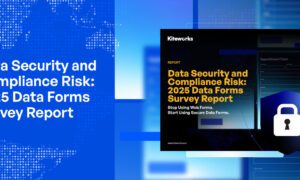The advancement of autonomous vehicles has brought forth an array of challenges in data security and integrity. Raghavendra Kurva, a researcher specializing in blockchain applications, presents an innovative approach to ensuring real-time data validation in autonomous vehicle systems. His work introduces a novel hybrid architecture that integrates blockchain technology to address crucial data security concerns.
The Critical Need for Secure Data in Autonomous Vehicles
Autonomous vehicles rely on vast amounts of real-time sensor data to navigate and make decisions effectively. Each vehicle processes an estimated 1.2 TB of sensor data daily, encompassing inputs from LiDAR, radar, cameras, and GPS. The accuracy and integrity of this data are paramount since even minor discrepancies can lead to miscalculations in route planning, obstacle detection, or collision avoidance. However, current centralized data management systems remain vulnerable to security threats, including unauthorized access and data manipulation.These vulnerabilities create significant risks for transportation networks as autonomous vehicle adoption increases. Edge computing solutions offer promising alternatives by processing data locally, reducing transmission vulnerabilities. Additionally, blockchain technology provides potential frameworks for secure data verification and immutable record-keeping.
Limitations of Traditional Security Measures
Conventional encryption methods and authentication protocols introduce significant processing delays, often exceeding 50 milliseconds per transaction. This latency is problematic, considering autonomous vehicles require decision-making capabilities within 100 milliseconds. Additionally, traditional data protection methods struggle to prevent unauthorized interventions in vehicle-to-vehicle (V2V) and vehicle-to-infrastructure (V2I) communication networks, making them susceptible to cyber threats.
The Promise of Blockchain Technology
Blockchain technology offers a decentralized, tamper-proof method for securing real-time data. By leveraging distributed ledger systems, blockchain ensures that sensor data remains unaltered and accessible only to authorized entities. However, existing blockchain implementations have struggled with scalability issues, often requiring several seconds for consensus validation—far exceeding the operational requirements of autonomous vehicles.
Hybrid Blockchain Architecture: A Game-Changer
To overcome these challenges, He introduces a hybrid blockchain architecture that integrates Hyperledger Fabric with Apache Kafka. This framework enhances both security and performance by utilizing a permissioned blockchain network for data validation while employing Kafka’s high-throughput processing for real-time data transmission. The result is a system that can validate data with an average transaction time of just 3.8 seconds while maintaining a processing rate of 2,500 transactions per second.
Smart Contracts for Real-Time Data Validation
A key component of this system is the implementation of smart contracts, which autonomously verify and validate sensor data before storing it in the blockchain. These smart contracts execute predefined rules, ensuring that only authentic and verified data is processed. Testing has shown that this method successfully prevents 99.2% of unauthorized access attempts while maintaining an average data validation rate of 98.7%.
Optimized Data Processing with Kafka
Apache Kafka plays a crucial role in the hybrid system by managing high-frequency data streams efficiently. The optimized Kafka configuration enables the processing of sensor data with 99.95% reliability and an average latency of less than 50 milliseconds. This setup ensures seamless communication between various components of the autonomous vehicle network while maintaining high-speed data processing capabilities.
Performance and Security Benchmarks
Experimental testing of this hybrid blockchain system demonstrates significant improvements over traditional approaches. The system maintains data integrity across geographically distributed nodes with a 99.99% data availability rate. Additionally, real-time validation processes ensure that 90% of data transactions are completed within 75 milliseconds, well within the required threshold for autonomous operations.
The Future of Secure Autonomous Driving
His research paves the way for integrating blockchain technology into real-world autonomous vehicle applications. By addressing the security and performance limitations of existing systems, this hybrid approach offers a scalable and efficient solution for ensuring data integrity. As the autonomous vehicle industry continues to evolve, advancements like this will play a critical role in enhancing safety.
In conclusion,The integration of blockchain technology into autonomous vehicle systems presents a promising solution to longstanding data security challenges. Through a combination of smart contracts and high-performance data streaming, Raghavendra Kurva hybrid architecture effectively balances real-time processing demands with robust security measures. This innovative framework marks a significant step toward the widespread adoption of blockchain-secured autonomous vehicles.



































